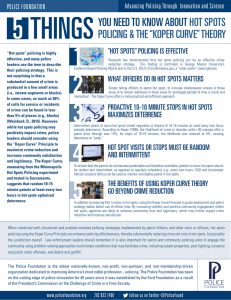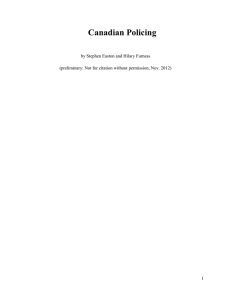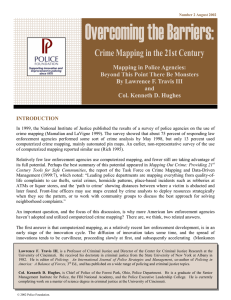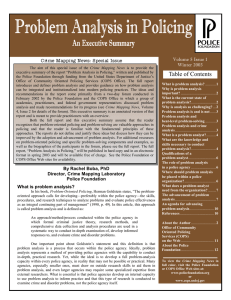Chapter 2 Policing Today Chapter 2 Multiple Choice 1. The
advertisement
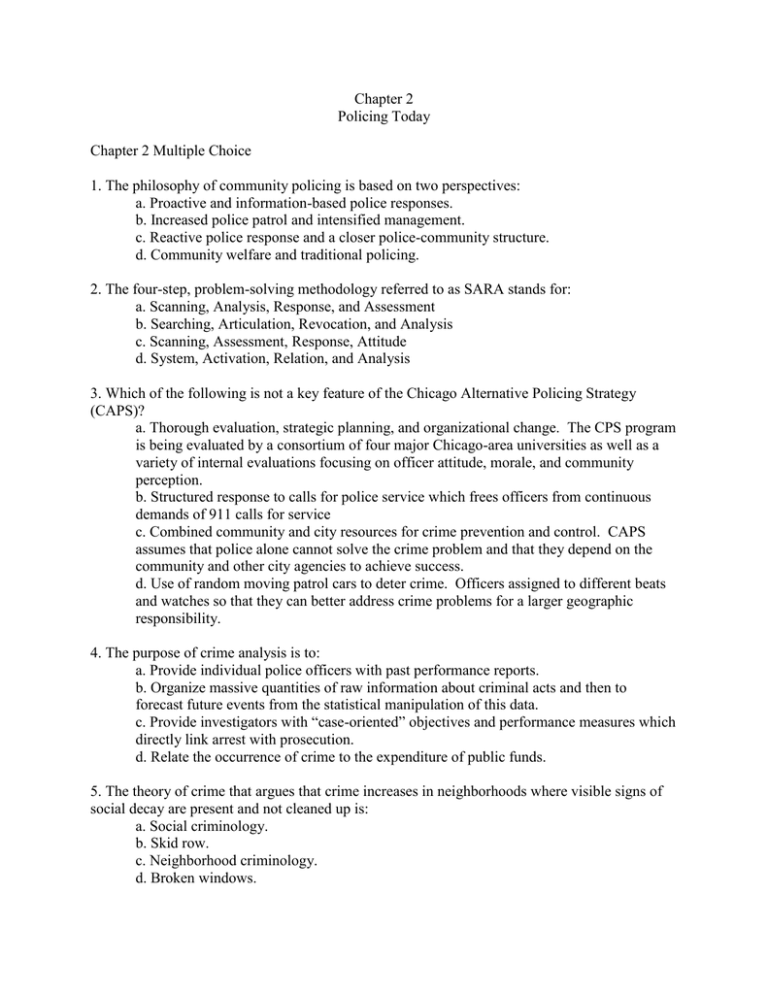
Chapter 2 Policing Today Chapter 2 Multiple Choice 1. The philosophy of community policing is based on two perspectives: a. Proactive and information-based police responses. b. Increased police patrol and intensified management. c. Reactive police response and a closer police-community structure. d. Community welfare and traditional policing. 2. The four-step, problem-solving methodology referred to as SARA stands for: a. Scanning, Analysis, Response, and Assessment b. Searching, Articulation, Revocation, and Analysis c. Scanning, Assessment, Response, Attitude d. System, Activation, Relation, and Analysis 3. Which of the following is not a key feature of the Chicago Alternative Policing Strategy (CAPS)? a. Thorough evaluation, strategic planning, and organizational change. The CPS program is being evaluated by a consortium of four major Chicago-area universities as well as a variety of internal evaluations focusing on officer attitude, morale, and community perception. b. Structured response to calls for police service which frees officers from continuous demands of 911 calls for service c. Combined community and city resources for crime prevention and control. CAPS assumes that police alone cannot solve the crime problem and that they depend on the community and other city agencies to achieve success. d. Use of random moving patrol cars to deter crime. Officers assigned to different beats and watches so that they can better address crime problems for a larger geographic responsibility. 4. The purpose of crime analysis is to: a. Provide individual police officers with past performance reports. b. Organize massive quantities of raw information about criminal acts and then to forecast future events from the statistical manipulation of this data. c. Provide investigators with “case-oriented” objectives and performance measures which directly link arrest with prosecution. d. Relate the occurrence of crime to the expenditure of public funds. 5. The theory of crime that argues that crime increases in neighborhoods where visible signs of social decay are present and not cleaned up is: a. Social criminology. b. Skid row. c. Neighborhood criminology. d. Broken windows. 6. The person most often associated with problem-oriented policing is: a. J. Edgar Hoover b. James Q. Wilson c. Herman Goldstein d. George Kelling 7. In a police department committed to community policing, police effectiveness is measured by: a. Response times. b. Arrest rates. c. Greater community involvement. d. Multiple prosecutions. 8. Which of the following is not associated with CompStat? a. Accurate and timely intelligence and statistical crime information b. Rapid deployment of resources c. Effective tactics of enforcement that focus on visible street crimes or “quality-of-life” crimes d. Occasional follow-up and assessment 9. CompStat relies heavily on: a. Large numbers of police officers. b. Helicopters. c. Accurate statistical crime data. d. SWAT teams. 10. You are a police officer whose department emphasizes that few crime incidents are isolated, but rather they may be a part of a wider set of urban phenomena. You are probably working in a department whose philosophy is driven what approach to policing? a. Social science b. Urban ecology c. Problem-oriented d. Incident-driven








